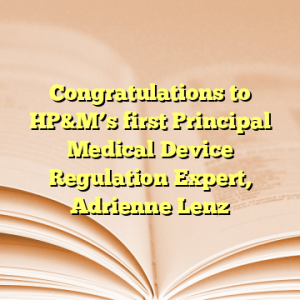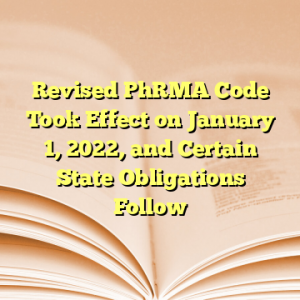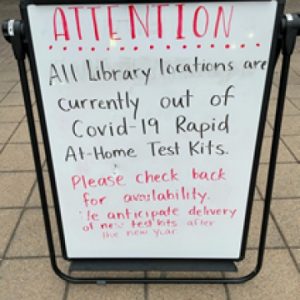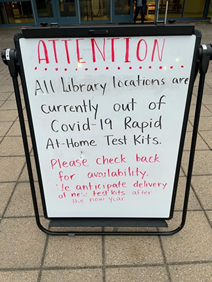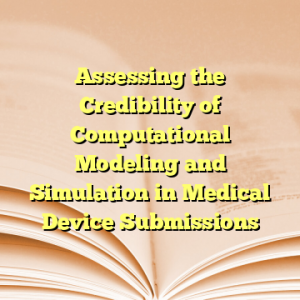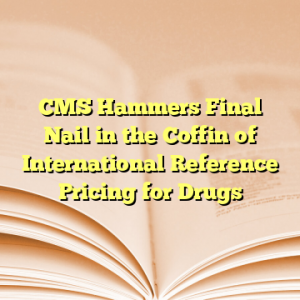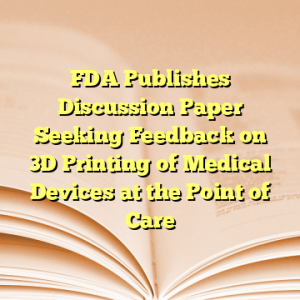
On December 10, 2021, FDA issued a discussion paper titled 3D Printing Medical Devices at the Point of Care seeking feedback on FDA regulatory oversight of various 3D-printing scenarios, in order to inform future policy development.
This discussion paper is not the first time that FDA has grappled with the tricky regulatory questions presented by 3D printing. In October 2014, FDA held a public workshop titled “Additive Manufacturing of Medical Devices: An Interactive Discussion on the Technical Considerations of 3D Printing.” In May 2016, FDA released a draft guidance document titled “Technical Considerations for Additive Manufactured Devices” (see our blog post on the draft guidance here), which was finalized in 2018 (see our blog post on the final guidance here). This guidance document is still in effect today.
The recent discussion paper is not a guidance document and FDA says it is not intended to convey any current policy. Rather, it is meant to present various scenarios related to use of 3D‑printed devices at the point of care, along with a series of discussion questions seeking input from industry and other stakeholders.
The discussion paper starts with an acknowledgment of the benefits of 3D printing at the point of care. Specifically, that it allows for fast production of “patient-matched devices” (i.e., devices that are fitted specifically to a patient’s anatomy), and anatomical models for surgical planning. 3D printing has also allowed for production of medical devices such as face shields, face mask holders, nasopharyngeal swabs, and ventilator parts during device shortages caused by the COVID-19 pandemic.
However, the discussion paper summarizes, there are a number of regulatory challenges associated with 3D printing, including (1) ensuring devices are safe and effective; (2) ensuring appropriate controls are in place for design and manufacturing so that product specifications are met; (3) clarifying which entities are responsible for compliance with regulatory requirements; and (4) ensuring that point-of-care facilities have the necessary training and expertise to produce 3D-printed devices.
The discussion paper provides an overview of FDA’s current approach to regulation of 3D-printed devices. In brief, such devices can be commercially distributed to the general public for non-medical purposes without FDA regulation (e.g., use in education, construction, art, and jewelry). Additionally, general purpose manufacturing equipment, including 3D printers and mills, are not subject to FDA regulation if not specifically intended to produce medical devices. FDA does regulate 3D printing equipment and activities when intended to produce regulated medical devices (i.e., products intended for medical purposes). The regulatory requirements for the devices that are 3D-printed generally govern the responsibilities of the entities that are manufacturing and distributing the 3D printing equipment for that use at the point of care.
The proposed regulatory approach in the discussion paper incorporates several high-level concepts:
- The extent of FDA oversight should correspond with the risks of the printed device and the 3D printing of the device at the point of care;
- The device specifications should not change based on the location of manufacture (i.e., a traditional manufacturing site vs. the point of care);
- The capabilities available at a point-of-care healthcare facility can help mitigate production risks;
- Entities involved in 3D printing of devices should understand their regulatory responsibilities under the Federal Food, Drug, and Cosmetic Act; and
- FDA intends to leverage existing regulatory controls for the regulation of 3D printing at the point of care, including existing standards and processes.
The discussion paper outlines three illustrative scenarios, to facilitate discussion and feedback from stakeholders.
The first scenario is a healthcare facility using a medical device 3D-printing production system. FDA is seeking feedback on the challenges that a manufacturer of a 3D-printing system may face in being responsible for FDA regulatory requirements for devices that are 3D-printed by independent healthcare facilities, including with respect to adverse event reporting. FDA also asks questions about the challenges related to any post-production manufacturing steps that may be undertaken by a healthcare facility after the device is printed.
The second scenario is a traditional manufacturer that is co-located at or near the healthcare facility site, where the 3D printing is conducted by the manufacturer to supply devices to the healthcare facility. In this scenario, FDA is interested in the possibility of frequent design changes that may occur in response to clinical feedback (e.g., requests for different sizes or geometries after a printed device is examined by a healthcare provider). FDA also asks whether there are any specific considerations in this co-location scenario that differ from traditional non-3D printed manufacturing processes for devices.
The third scenario is a healthcare facility that has assumed all traditional manufacturer responsibilities, including complying with all FDA regulatory requirements that apply to traditional device manufacturers. The discussion paper notes that healthcare facilities already have internal quality systems in place that could be adapted to compliance with device regulatory requirements (e.g., complaint handling and adverse event reporting processes) and staff trained in the maintenance of equipment. FDA is seeking feedback on which parts of FDA’s regulatory framework would be the easiest for healthcare facility’s to implement, and which would present the greatest challenges.
Separate from these three scenarios, the discussion paper seeks feedback on considerations for “very low risk” devices. FDA has not yet defined “very low risk,” but the discussion paper states that it is considering developing a list of characteristics that would help identify very low risk devices. The discussion paper includes a question for stakeholders on a proposed list of considerations in identifying these devices (e.g., intended use, device class, whether the device requires sterilization). For these devices, FDA is considering exercising “regulatory flexibility” when these devices are 3D-printed at a healthcare facility, which we assume refers to some level of enforcement discretion with regard to compliance with manufacturing regulatory requirements.
The discussion paper states that FDA will use the feedback submitted to the public docket it has opened (Docket No. FDA-2021-N-1272) to inform future policy development. Comments may be submitted until February 7, 2022.




